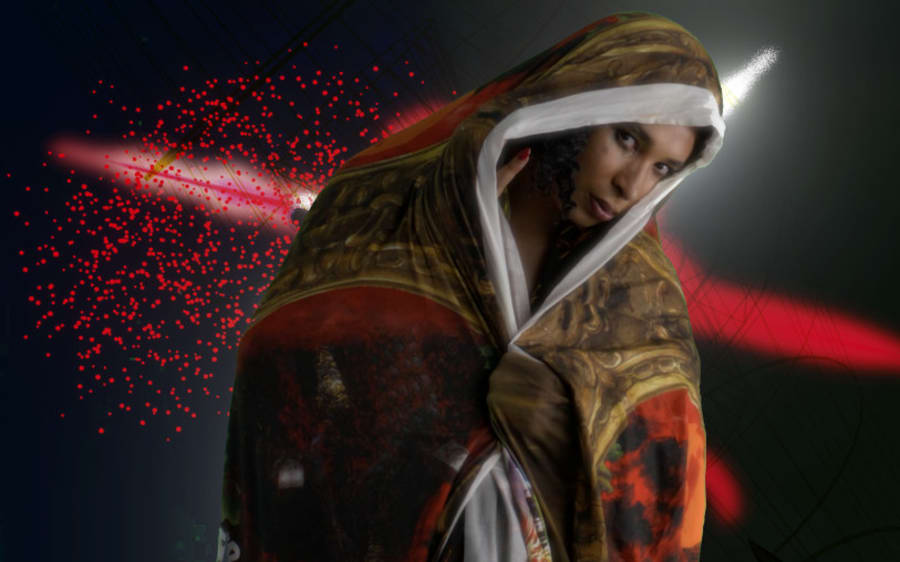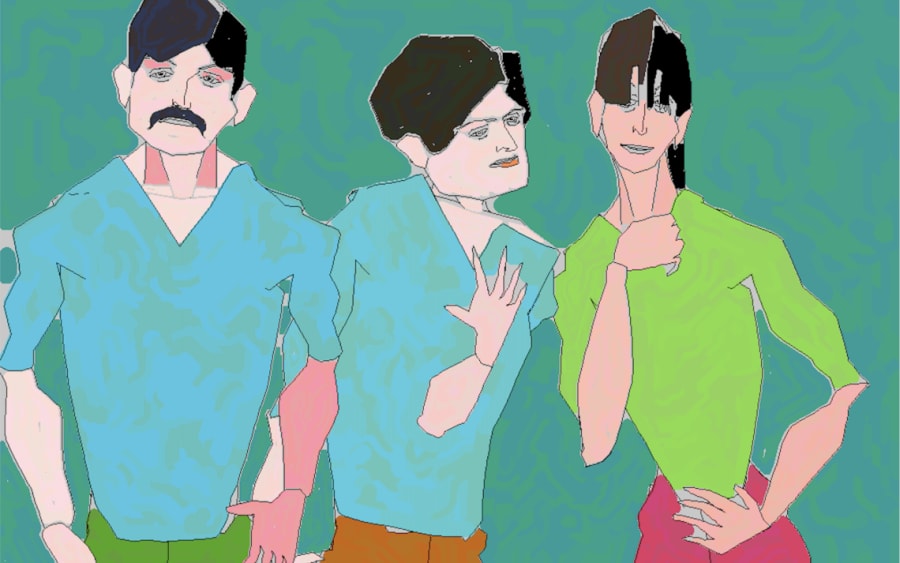As the artworld’s spotlight on digital art has steadily shone brighter over the last five years, a renewed focus on its historical lineage has simultaneously emerged. This year alone, several institutional exhibitions have represented this turn, including Harold Cohen at the Whitney Museum of American Art in New York, Lynn Hershman Leeson at the Julia Stoschek Foundation in Dusseldorf, and Vera Molnár at both the Centre Pompidou in Paris and the Ludwig Museum in Budapest. In addition to exhibitions, a number of discursive events are revisiting historical positions from contemporary perspectives, too. The sold-out series of talks ‘Cybernetic Serendipity: Towards AI’, at London’s Institute of Contemporary Arts (ICA) earlier this year, reframed a landmark show held in 1968. Tomorrow, as part of this year’s Conversations program at Art Basel in Basel, digital art pioneer Rebecca Allen will take the stage to discuss the evolution of digital worldbuilding over the last five decades in a panel moderated by Hans Ulrich Obrist.
Allen and Hershman Leeson, who both began working with computers to produce art in the mid-1970s, are now widely recognized as artists who consistently use new technologies for creative means. Yet digital art – especially if understood as defined by curator Christiane Paul in her book Digital Art (2003) as ‘digital-born, computable art that is created, stored, and distributed via digital technologies and employs their features as its very own medium’ – has been in constant development since the 1950s, when the digital revolution began. To fully understand the progression of the early years of digital art, we must turn to a group now referred to as the Algorists.
The Algorists – who included Cohen, Charles Csuri, Hiroshi Kawano, Molnár, and John Whitney – all leveraged the new power of computers to program algorithms for generating art beginning in the 1950s. With household desktop computers still years away, they relied on scientific laboratories and universities for access to the technology. Whitney, for instance, worked at the Lockheed Aircraft Factory in California during World War II on high-speed missile photography. When he realized some of these weapons’ targeting elements could be used for plotting graphics, he adopted them to create screen-based patterns of oscillating arabesques. Csuri, on the other hand, was interested in figuration. A professor of art at Ohio State University, he carried out complex and laborious processes to explore human figuration and movement in the natural world. For his animation Hummingbird (1967), Csuri used a computer to develop vector-based representations of the bird before devising mathematical algorithms to adjust the geometry of the images. Then, he wrote custom software to generate frames and, finally, the sequenced frames were drawn directly onto film using a microfilm plotter.
Of the Algorists, Molnár’s work has been most frequently revisited in recent years – perhaps in part because she, unlike many of her peers, was close with the artworld throughout her adult life. Molnár was born in Budapest in 1924 but, in 1947, she moved to Paris, where she met Modernist giants like Constantin Brâncuși, Sonia Delaunay, and Fernand Léger. Over the next few years, Molnár’s hand-drawn works shifted from loose depictions of the natural world to more rigid patterns and shapes – a reflection of the influence of Delaunay and the Constructivists on her practice. In 1968, when the Sorbonne granted her access to mainframe computers, she employed algorithms and plotters to produce drawings of an even-more uniform arrangement. Throughout the rest of her career, Molnár’s work captured the push-and-pull creative relationship between human and machine.
Around the same time in Japan, Kawano was approaching digital image-making from his own perspective as a philosopher. Kawano was strongly influenced by the theories of German philosopher Max Bense, who believed aesthetic experience could be more deeply understood by using the computer to create and study art. In 1963, after writing a program for one of the earliest computers produced in Japan, the OKITAC 5090A, the artist devised his first computer-generated images. A painting he made the following year, Design 3-1. Data 4, 5, 6, 6, 6 [Design 1-4. Data 1, 2, 3, 3, 3] (1964) – which replicates a pattern produced by the OKITAC – underlines his lifelong exploration of the logic of artistic creation through experimental computer generation.
Toward the end of the 1960s, as the Algorists continued their respective explorations, an important shift within the artworld was taking place: Digital art was beginning to be seen as a legitimate media, and the artworld was starting to embrace practitioners who had long worked on the fringes or as outsider artists. This shift was initiated in large part by two seminal exhibitions held in 1968: ‘The Machine as Seen at the End of the Mechanical Age’, at the Museum of Modern Art in New York, and ‘Cybernetic Serendipity’ at the ICA, which toured the following year to Washington, D.C., and San Francisco. In addition to highlighting historic artists who worked with mechanical technologies, like Marcel Duchamp or Jean Tinguely, the shows also included digital art, launching the careers of younger names such as Lillian Schwartz.
When Allen began working with computers in the mid-1970s, she benefited from the artworld’s newfound acceptance of digitally produced work. Similar to Molnár, Allen had started her career drawing by hand but, in the early 1970s, when she enrolled at Rhode Island School of Design and gained regular access to computers, she began working with digital animation. Bridging Csuri’s fascination with the movement of a hummingbird and the other Algorists’ interest in geometric abstraction, her digital animation Steps (1982) combines geometric shapes with human dance.
Like Allen’s upcoming talk, and like so many recent exhibitions featuring the pioneers of digital art, ‘Cybernetic Serendipity: Towards AI’ explicitly ‘looked back to look forward’. Considering the practices of the earliest pioneers – including their outsider status in relation to the artworld – can provide a better understanding of the contemporary digital art scene, particularly with regards to the rise of NFTs. As Jasia Reichardt, the curator of ‘Cybernetic Serendipity’, explained in her keynote address during the exhibition’s 2024 reexamination: Contemporary artists’ continually evolving approach to digital art brings us ever closer to a fuller understanding of the impact of their predecessors.
Rebecca Allen will participate in the panel discussion ‘Building utopias: what do we dream of?’, moderated by Hans Ulrich Obrist, tomorrow, June 12, at 1 pm, as part of the Conversations program at Art Basel in Basel. Register to attend the event here.
Tom Mouna is a writer and curator based in London.
Caption for top image: Installation view of Lynn Hershman Leeson, The Electronic Diaries of Lynn Hershman Leeson, 1984–2019, at the Julia Stoschek Foundation, Dusseldorf, 2024. Photograph by Alwin Lay.
Published on June 11, 2024.


